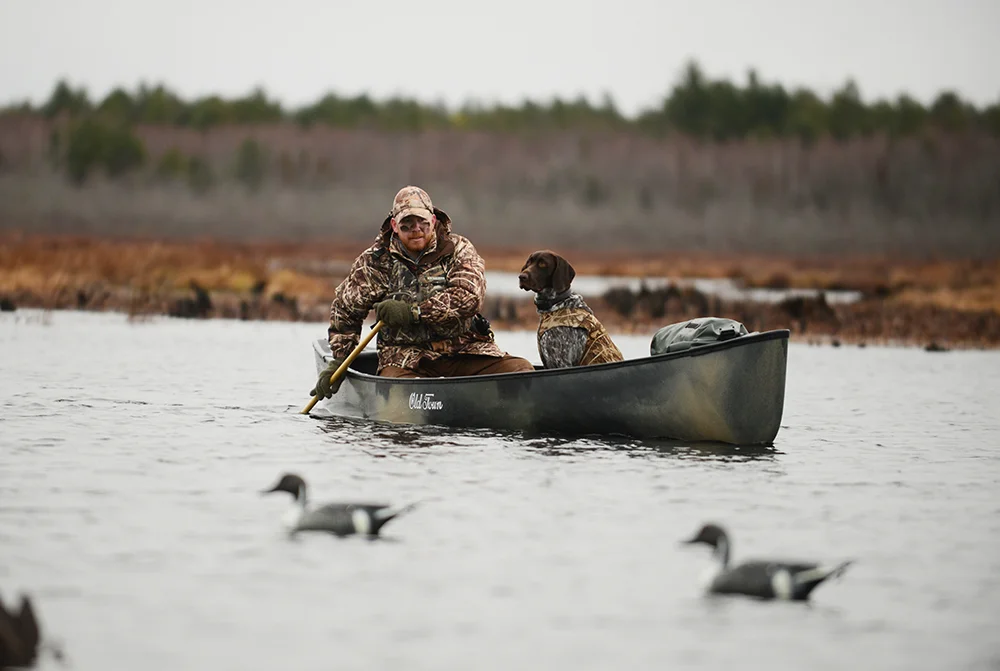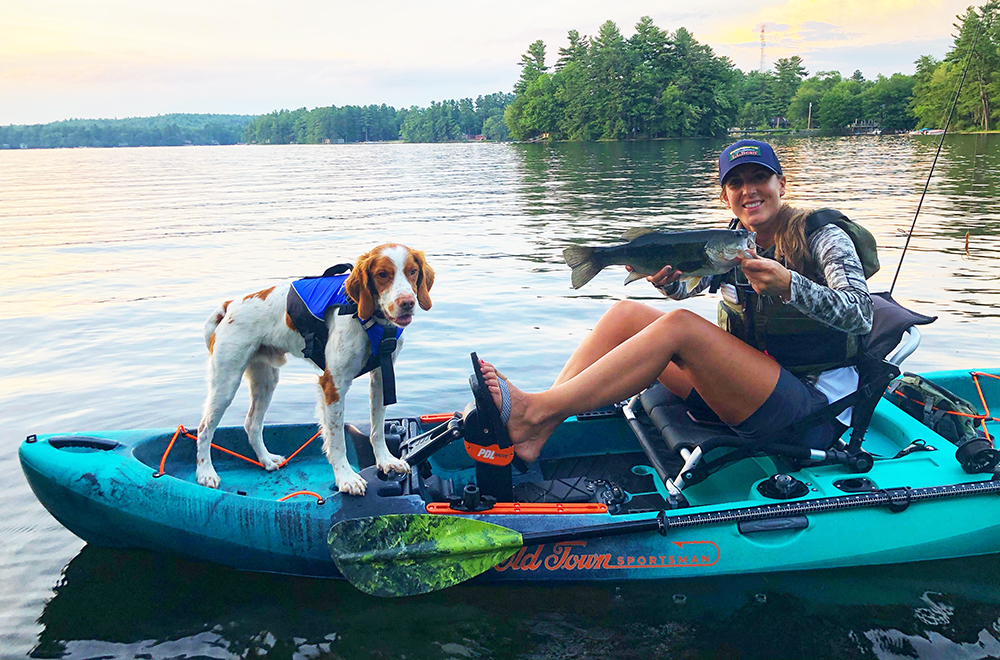Tips for Canoeing & Kayaking with a Dog
By: Christi Holmes, Ambassador
Bringing your dog on the water can enhance the experience for both of you. Dogs that don't enjoy motorboats, due to the wind or motor noise, may do better on quiet, relaxing kayaks and canoes. Here is some advice and considerations if you plan to share your water adventure with your furry friend.
Is My Dog a Good Fit for Paddling?
Literally and figuratively. Large breeds over 100lbs are not good candidates since they take up so much room in a craft and can make it difficult to maneuver. Not all dogs love the water, but even dogs that don't enjoy swimming can have a good time on the water. If water makes your dog nervous or anxious, you'll want to take the training portion slow and involve lots of treats.

Will My Dog Do Better in a Canoe or a Kayak?
Canoes, tandem kayaks, and single kayaks all make it possible to hit the water safely with your dog, however, each platform has its own set of advantages and disadvantages. It's important to consider where you will be paddling, how you like to paddle, and how experienced you are on the water when deciding which watercraft is best for you and your dog.
Canoes for Dogs
Canoes offer the most spacious and comfortable ride for your pup thanks to their open design and larger size. Models like our Discovery 169, Discovery 158, and Discovery 133 are popular among paddlers, anglers, and hunters who prefer to bring along their dogs. Canoes provide a nice open space for a dog to sit or lay down, and you can even fit a small dog bed if they prefer a little padding and a familiar smell out on the water. Lastly, a small electric motor can be easily installed on most canoes, providing an easier way to get around and cover more water.

Kayaks for Dogs
If you prefer to explore your favorite waterways in a kayak, you have plenty of options for getting your dog out with you on the water. A sit-on-top style kayak will provide the safest, roomiest, and most stable ride. Sit-on-top kayaks like the Old Town Sportsman 106, Sportsman 120, and Sportsman BigWater 132 are designed for standing and fishing, so they offer more stability and more room than a traditional sit-inside kayak.
Sit-inside kayaks like the Loon 120 can be better for small dogs that are nervous and prefer being close to you, however, if your kayak capsizes you want to be sure you can get your pup out easily. Always check the weight specifications and stability of your kayak before adding a canine passenger.
Another great kayak design that lends itself to bringing a dog is a tandem kayak. These kayaks come in both sit-on-top and sit-inside versions and are designed for two passengers. Popular tandem kayaks for dogs are the Twin Heron, Dirigo Tandem, and the Ocean Kayak Malibu Two and Malibu Two XL.
Training Dogs for a Canoe or Kayak
A little pre-trip training goes a long way in ensuring both you and your pup are comfortable and safe on the water.
With your canoe or kayak on shore, have your dog practice jumping in and out of it. Work on sit, stay, and lay down commands; every move your dog makes will be amplified on the water. You can assign a place for your dog in your watercraft so they know where to stay. Once the two of you are confident on the lawn, move to the water and practice the same commands while wading in shallow water.
Your first trip in the water should be in calm conditions on a warm day and start close to shore. Try to go in the early morning before other boats are out. Work on your stay command if you find your dog walking around the watercraft. Notice the stability of your watercraft when your dog shifts around and shakes water off its coat. If your dog enjoys swimming, encourage them to jump out of the watercraft while you're near shore and notice how the craft moves. Another option is to discourage your dog from jumping out so they learn that they should never jump out. Try helping your dog back into the craft. Is it possible or do you have to go to shore?
Once you're comfortable near the shore you can try venturing further out, but still in calm waters. If your dog shows signs of fear or anxiety, return to shore and continue training.

Gear for Canoeing and Kayaking with Dogs
Safety is paramount when on the water for both you and your dog. You should and your dog should always wear a life jacket, no matter how well they can swim. A doggy life jacket with a handle is very helpful for helping your pup into your craft.
Other gear that is helpful to bring include:
- Snacks and toys to chew on in case they get bored
- A towel or dog bed to make the vessel more comfortable for your pup and for drying them off
- Dog-friendly sunscreen for their nose
- A leash for use while getting in and out of the water
- A water bowl and plenty of fresh water
Tips to Keep You and Your Dog Safe on the Water
No matter how much planning and training you do, things happen. Here are some tips to keep both of you safe out on the water:
- Watch out for wildlife. Don't tempt your pup by getting close to loons or ducks.
- Watch the weather! It's dangerous to be on the water during a thunderstorm, and if your pup has a fear of thunderstorms, it could be especially traumatizing.
- Stop frequently so your dog can relieve themself and stretch their legs.
- Don't leash your dog to the boat, this could be dangerous if they jump out or you capsize.
- Your dog can't tell you if they're hot or cold, but if they start panting heavily go to shore and allow them to swim and cool off. On a cold day, keep the trip short or take breaks to let them run around on shore and warm up.
- If your dog jumps out of the boat, head to the closest shore and help them back in.
It's a learning process for both you and your dog, but with some training, I'm sure you'll agree that canoeing and kayaking with your dog is extremely rewarding.






